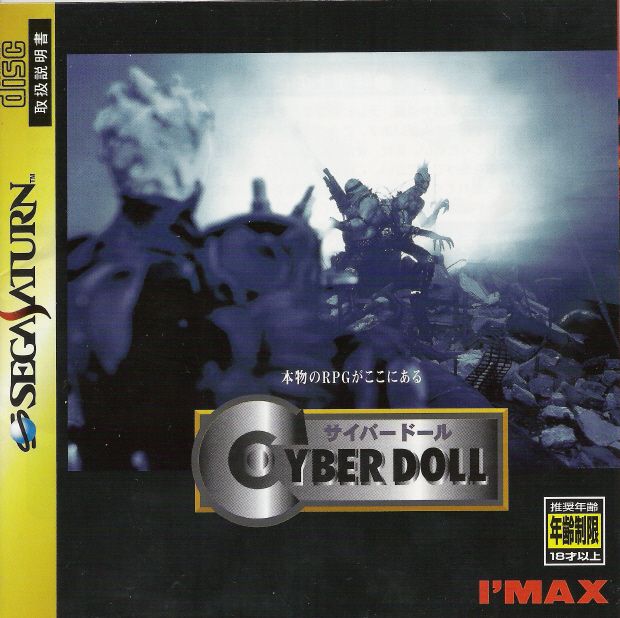Retro Replay Review
Gameplay
Cyber Doll’s gameplay revolves around a turn-based combat system that cleverly integrates a platform perspective. As you traverse the neon-lit corridors of Zero City, you’ll encounter randomly spawning enemies that force you to make tactical decisions on the fly. The decision to engage or evade is always fraught with tension, since every skirmish drains resources and chipping away at enemy body parts can dramatically shift the tide of battle.
(HEY YOU!! We hope you enjoy! We try not to run ads. So basically, this is a very expensive hobby running this site. Please consider joining us for updates, forums, and more. Network w/ us to make some cash or friends while retro gaming, and you can win some free retro games for posting. Okay, carry on 👍)
One of the most innovative mechanics is the separate hit points assigned to each limb and body region. You can focus fire on an enemy’s legs to immobilize them or blast off their arms to severely limit their offensive capabilities. Weapon choice becomes a strategic element: precision sidearms allow you to target specific limbs, while heavier machine guns deal widespread damage at the expense of ammo conservation. This layered combat model offers nuanced choices that keep encounters from feeling repetitive.
Between fights, you can upgrade Cyber Doll’s artificial enhancements through a straightforward customization menu. Spend currency earned from missions to reinforce your own limbs, augment weapon loadouts, or install new features like energy shields and jet boosters. The upgrade path rewards experimentation, since different combinations of enhancements produce radically different playstyles. Whether you prefer hit-and-run tactics or a tank-like frontline approach, there’s room to tailor Cyber Doll to your personal taste.
Difficulty scales smoothly as you progress, with enemy variants introducing new abilities—such as self-healing implants or camouflage boosters—that force you to rethink your tactics. Occasional boss battles punctuate the campaign, pushing your mastery of body-part targeting and upgrade synergies to the limit. Overall, the blend of platform exploration and RPG-style turn-based combat makes Cyber Doll an engaging challenge from start to finish.
Graphics
Visually, Cyber Doll marries late-90s sci-fi aesthetics with modern pixel art finesse. The sprawling skylines of Zero City glow with neon signs and holographic advertisements, while shadowy alleyways hint at lurking threats. Character sprites are detailed enough to convey emotion and mechanical intricacies, yet lean into the retro charm that fans of classic RPGs will appreciate.
Enemy designs vary from mutated humanoids with grotesque cybernetic grafts to sleek mech-suited Dark Visitor operatives. Each model is animated with crisp, fluid motions that bring turn-based attacks to life. When you land a critical shot on an enemy limb, the ensuing animation—watching a robotic arm shatter or a mech leg crumple—packs real visual satisfaction.
The user interface is clean and intuitive, with hit-point bars for each body part clearly displayed during combat. Menus for inventory, upgrades, and mission briefings use a minimalist HUD style, ensuring information is accessible without cluttering the screen. Map transitions between exploration zones are seamless, dotted with brief loading animations that maintain immersion in Cyber Doll’s dystopian world.
Subtle environmental effects—rain-swept streets, flickering neon, and occasional blaring sirens—add atmospheric weight to every scene. Though the art style leans toward pixel work, dynamic lighting and parallax scrolling lend depth, making each district of Zero City feel distinct and alive. It’s a testament to how retro-inspired visuals can still create a striking futuristic setting.
Story
The narrative of Cyber Doll opens with a grim prophecy fulfilled: in 1999, humanity was ravaged by the Muscular Loosening Disease (MLD), forcing scientists to launch the controversial Human Machiners Project. This backstory sets a somber tone, exploring themes of humanity versus machinery and whether immortality comes at the cost of one’s soul. You gradually uncover archived videos and journal entries that flesh out the somber morality of replacing flesh with steel.
Fast forward to 2039, and you assume the role of an augmented agent in the Debugger unit—tasked with exterminating the mutant “Dark Visitors” terrorizing Zero City. Unlike many RPGs that rely on exposition dumps, Cyber Doll weaves its plot through mission briefings, in-field dialogues, and environmental storytelling. Graffiti scrawled on abandoned walls hints at civilian resistance cells, while intercepted radio chatter reveals fractured alliances within the Dark Visitor ranks.
Your personal motive for joining the Debuggers—avenging your family, who were slaughtered by early-stage mutants—imbues the journey with emotional stakes. As you progress, you’ll be confronted with moral dilemmas: do you harvest enemy bio-components for profit, or hand them over to research teams seeking a cure? These choices affect your relationships with NPCs and influence branching side quests, adding replay value to the storyline.
While the central narrative is straightforward, subplots involving rogue scientists, black-market arms dealers, and reformed Dark Visitors deepen the world-building. Voiceovers—sparse but impactful—drive home the desperation and resolve of characters fighting to reclaim their lost humanity. Cyber Doll’s story keeps you invested not just in the next battle, but in the overarching question: can a machine ever truly feel?
Overall Experience
Cyber Doll strikes a satisfying balance between strategic depth and approachable mechanics. From its methodical turn-based encounters to the roaming patrols across Zero City’s vast map, the game never lets you settle into a rote routine. Every checkpoint and upgrade decision carries weight, ensuring you remain invested throughout the roughly 20-hour campaign.
The fusion of retro-inspired graphics with modern design sensibilities yields a distinctive aesthetic that resonates with both veteran gamers and newcomers. The atmospheric soundtrack—synth-driven and pulsing—underscores the dystopian tension, while well-placed ambient sounds bring the city’s chaos to life. Controls are responsive, menus are clear, and loading times rarely interrupt the flow of gameplay.
Cyber Doll’s narrative, though not earth-shatteringly original, is delivered with enough nuance and ethical complexity to elevate it above genre conventions. Side quests exploring the fates of minor characters often present moral quandaries that reverberate into the main storyline, making your choices feel meaningful rather than perfunctory.
For those looking for a thoughtful sci-fi RPG with tactical combat, engaging world-building, and striking visuals, Cyber Doll is a standout title. Its blend of platform action and limb-targeting strategy offers a fresh twist on turn-based mechanics, while its grim yet hopeful story keeps you emotionally engaged. Whether you’re here for the challenge, the lore, or simply the retro-futuristic vibe, Cyber Doll is well worth your time.
 Retro Replay Retro Replay gaming reviews, news, emulation, geek stuff and more!
Retro Replay Retro Replay gaming reviews, news, emulation, geek stuff and more!




Reviews
There are no reviews yet.